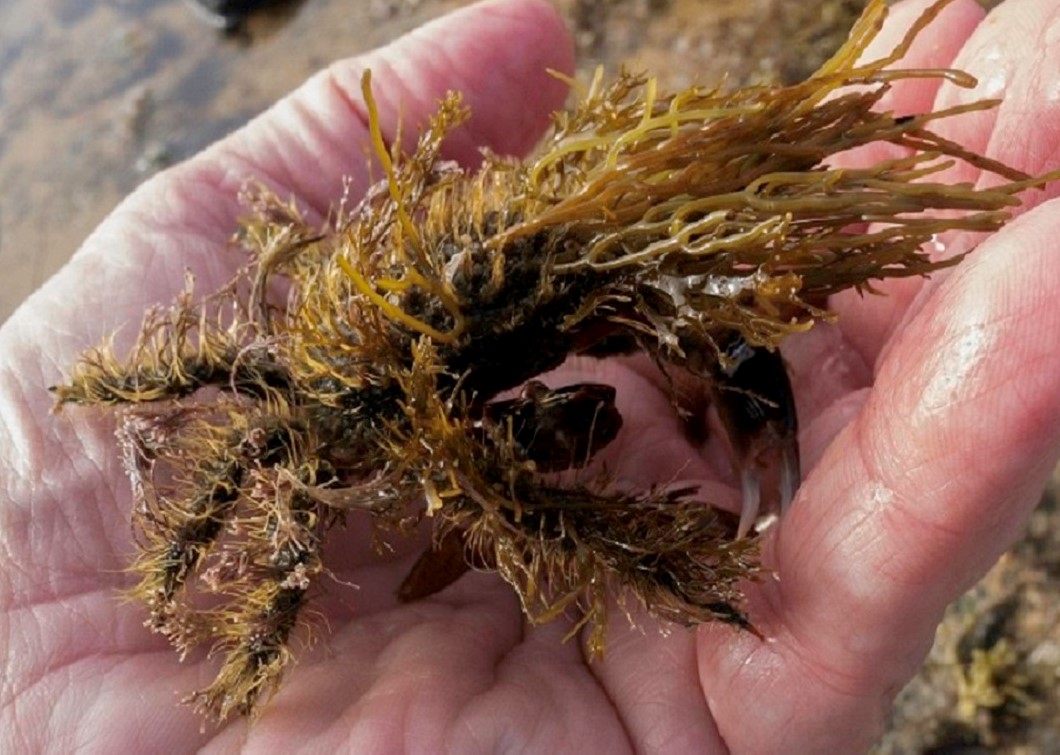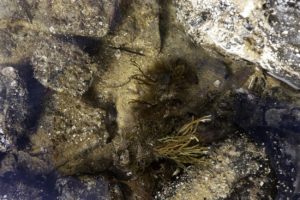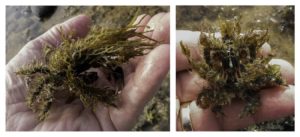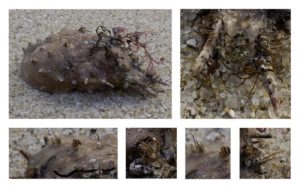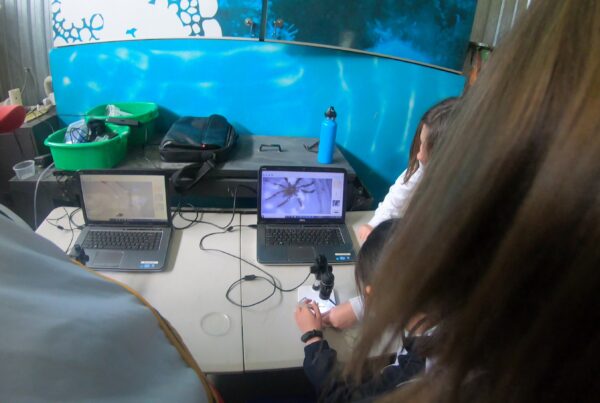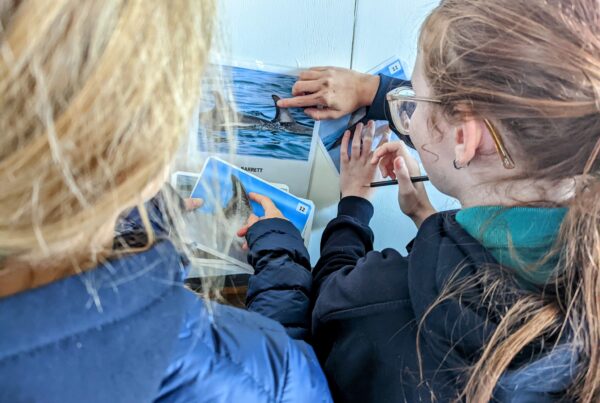Creature Feature – Let’s Play Hide and Seek!
Hide and seek is game we have all played at some stage. For animals living in a rock pool it is not a game, but survival. Using camouflage to hide in plain sight of your predators means they don’t eat you and you conserve your energy as you don’t have to run away.
Can you see the animals in the picture above? There are two decorator crabs in the middle of the picture! These crabs belong to a group known as seaweed crabs who decorate their body with living seaweeds. Some have hairs and hooks on their body to which they attach the seaweeds, others chew the end of the seaweed and create a glue that they use to stick it to their body.
All crabs have a hard-external skeleton, an exoskeleton, which does not grow, but their body does. So periodically crabs need to moult, where-by they shed their exoskeleton and grow a larger one. When decorator crabs moult, all the hard work gathering their decorations does not go to waste. After moulting and the new exoskeleton has hardened they pick off the decorations from their old exoskeleton and attach it to their new one! The exoskeleton below was found on the beach at Flinders. In the enlargements, you can see the hooks and hairs used to attach the “decorations”.
Decorator crabs don’t just use seaweeds for their decorations. There is a group of crabs that use sponges. These crabs use their claws to cut a piece of a sponge, then trim it to the shape of their body. Some even create a cavity on the underside of the sponge to fit their body. Unlike the seaweed crabs, these crabs do not attach the sponge to their back, instead, their last pair of legs end in small pincers that are used to hold the sponge. It is worth noting that the sponge is not dead, it is a living camouflage. These Sponge crabs are very difficult to see in rock pools as their sponge camouflage is excellent.
Another Decorator crab that lives off the east coast of Africa is the carrier crab which takes camouflage to a new level! They use their last two pairs of legs to carry a sea urchin above their body because the urchin provides excellent protection from the crab’s predators. Interestingly the crabs just don’t choose any sea urchin, the sea urchin must have long spines for protection, but it must also have hollow spines, so they are not too heavy.
Have a look at a Decorator crab in the video below as it climbs over a brittle star and moves around a small rock pool after being disturbed.
If you would like to learn more about the fascinating world of Decorator crabs, and/or when restrictions allow join us on a fabulous rockpool ramble, please contact Dolphin Research Institute’s Education Director Mandy Robertson on education@dolphinresearch.org.au

